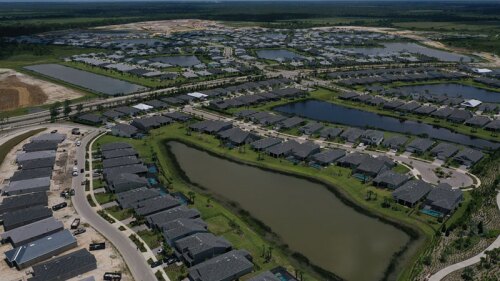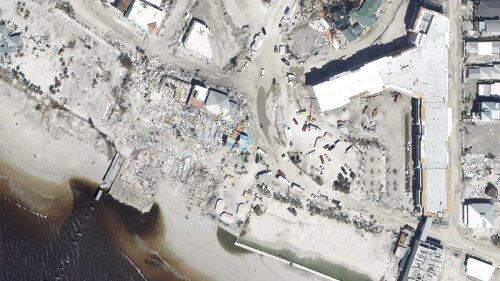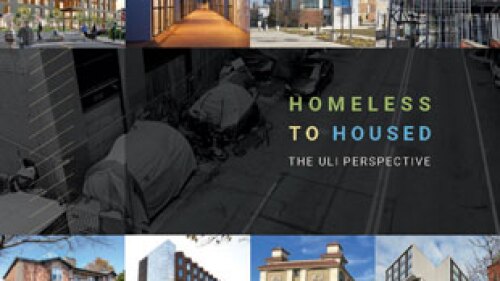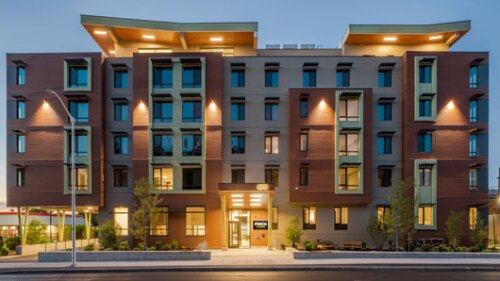For those who care deeply about building strong, economically viable, and healthy communities whose evolution improves the lives of millions on a global scale, ULI has been, since its founding in 1936, the undisputed thought leader and change maker across all land use disciplines.
In 1970, a group of visionary ULI leaders—the original 17 Foundation governors, led by ULI past president Robert Nahas—sought the most effective way to elevate the Institute’s position in the transformative improvement of communities worldwide.
That path was philanthropy.
To bolster ULI’s research capabilities and meet the growing need for an accessible body of knowledge pertaining to real estate and land development, each governor donated $50,000 to establish the Urban Land Research Foundation, now known as the ULI Foundation (ULIF).
Today, on the 50th anniversary of the Foundation’s founding, Robert Nahas “would be deeply gratified by the generosity of multiple generations of ULI members and the financial resilience the Foundation affords ULI,” says his son and current ULIF governor Ron Nahas. Most especially during times of economic uncertainty, “ULIF’s importance to our research and education programs will be keenly appreciated as we deal with the impact of the current stresses on ULI revenues.”
In its early years, the Foundation channeled its resources into the Community Builders Handbook, a guide for suburban development. To date, the Foundation has contributed more than $136.5 million to create and support ULI’s various mission-driven programs: the Terwilliger Center for Housing, UrbanPlan, Advisory Services, the Building Healthy Places Initiative, and the Women’s Leadership Initiative, to name a few.
Why They Support ULIF
Although her magnificent work pre-dates ULI, trailblazing architect Julia Morgan, the visionary behind the Hearst Castle and the namesake for one of ULIF’s new philanthropic societies, shared the Institute’s vision for the role the built environment plays in improving people’s lives. According to her grandniece Lauren Woodland, Morgan would particularly appreciate “ULI’s efforts to promote sustainability in construction, develop high-quality attainable housing, and create educational programs designed to foster innovation in building.”
Charles Fraser, known for his vision of environmentally conscious, thoughtfully planned, and energy-efficient development, was instrumental in ULIF’s early days. Those professionals whom he took under his wing became crucial figures in ULI and the Foundation.
Laura Lawton Fraser remembers her father’s passion for the industry and the communities he touched, particularly his knack for mentoring others. He would mentor colleagues “simply for the joy of helping another person excel and thrive on their path of life,” she says. “He was an amazing man, an amazing mentor, and the most amazing father.”
Four of Fraser’s former employees—James J. Chaffin, Harry Frampton, Peter Rummell, and J. Ronald Terwilliger—became chairmen of ULI and the ULI Foundation.
When Terwilliger joined ULI in 1974, he hoped to deepen his understanding of real estate on a national scale. Over the decades, he has led a product council, chaired ULI, and founded the ULI Terwilliger Center for Housing.
“I’m delighted to be involved and try to provide some leadership in the area I know best, which is housing,” he says. “It’s been a pleasure to be a part of it for so long.”
Frampton chaired ULI at a crucial time—during the debate over whether to expand globally. After admiring the sophistication of development outside the United States, the decision became clear.
“The lightbulb in my mind went off: we have as much to learn from the rest of the world—maybe even more than they have to learn from us,” Frampton said.
The Future 50
As the Foundation looks toward the next 50 years, the generosity and commitment of members matters more than ever.
“As the world grows and gets more complicated, it is increasingly critical to have a clearinghouse for ideas that have been tried—or not tried and are just somebody’s daydream,” Rummell says. “ULI serves that function. In addition to making members strive for quality and all the other things that are foundational to ULI, it is a home for innovation. As the world gets more complicated and is in a strange way ‘growing together,’ there is increasing opportunity and need.”
Philanthropic investment in the ULI Foundation continues to meet those needs and opportunities on a global-scale, providing leverage found nowhere else.
For Ron Nahas, his relationship with the Foundation goes deeper than business: it’s personal.
“Giving money away wisely is hard. Many of us are not programmed to do it well,” Nahas says. “When I consider how the ULI has enriched my family, my business, and my personal friendships, I am very grateful to have the Foundation, which I consider a safe harbor for charitable giving that will make a positive difference.”




